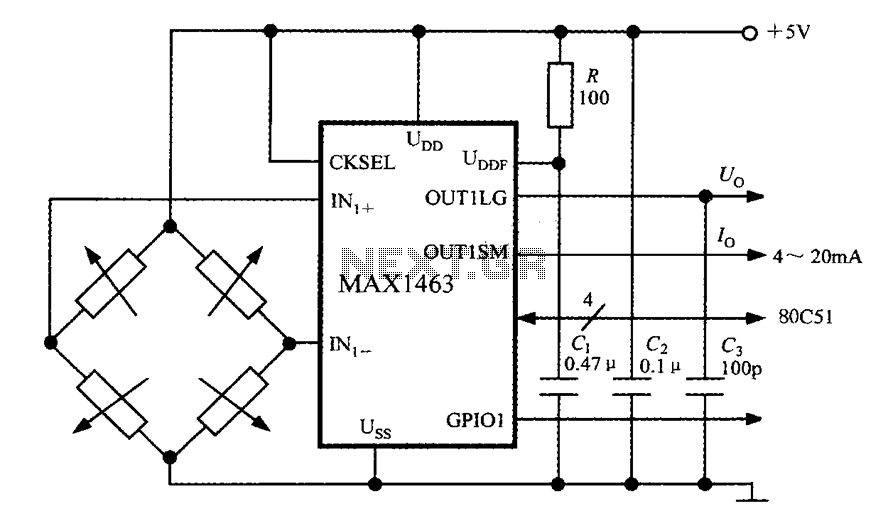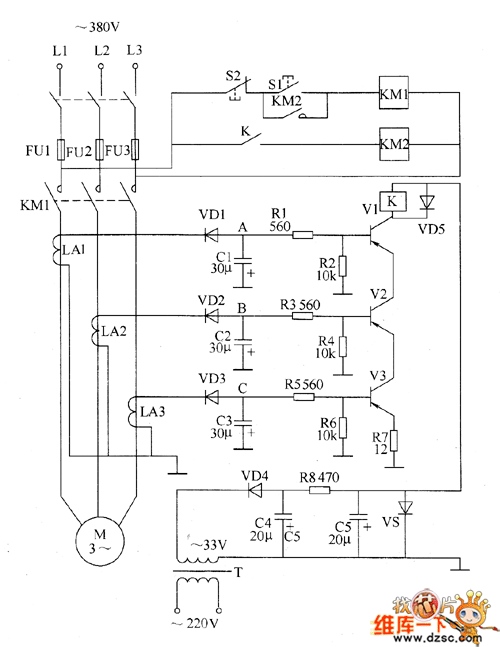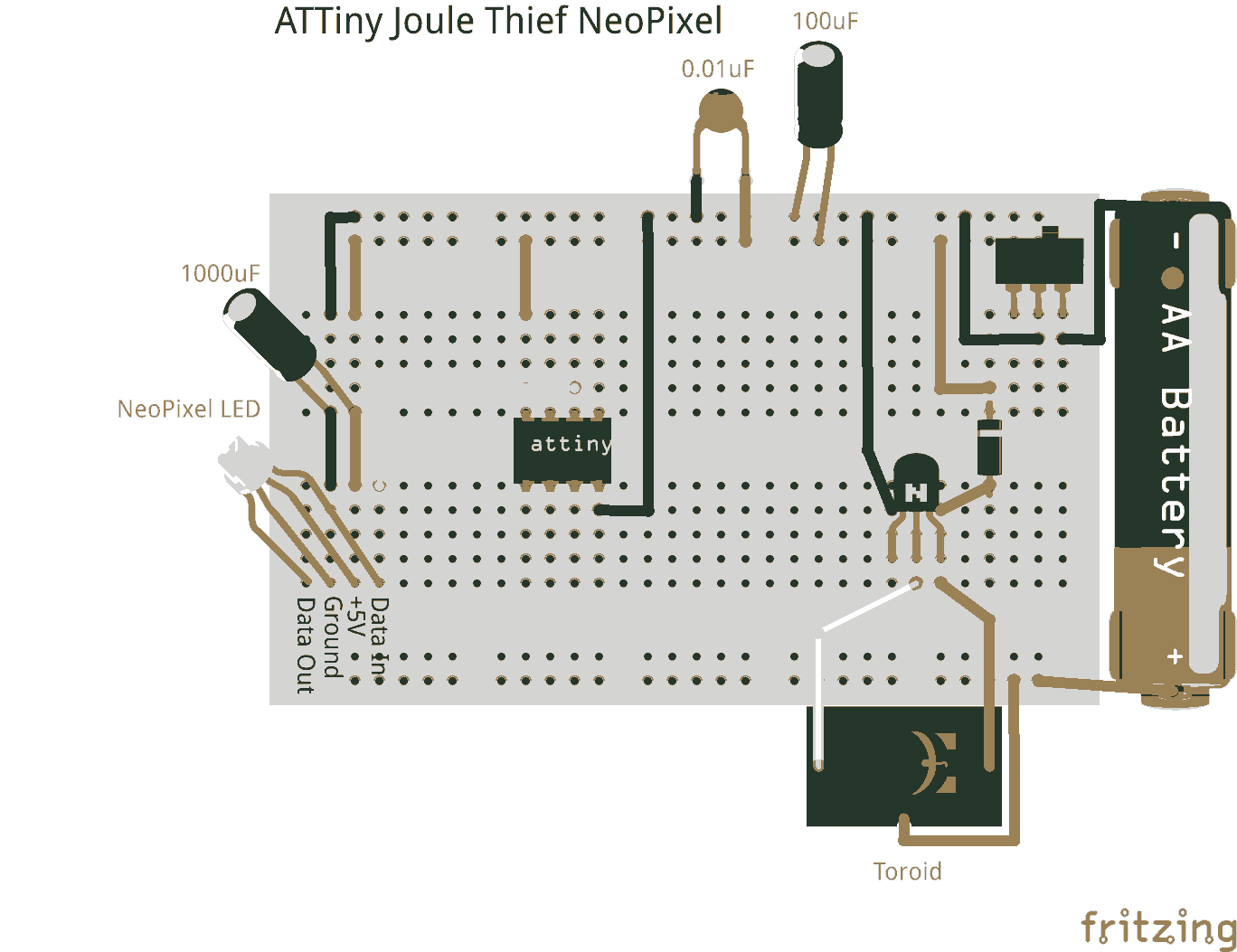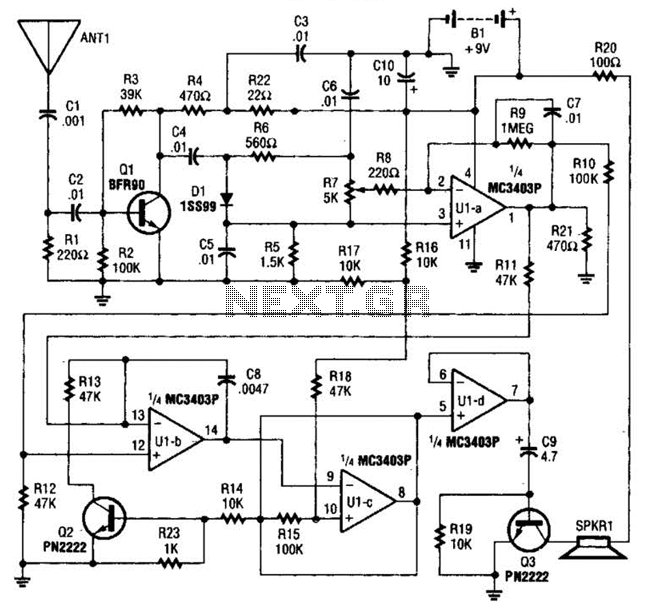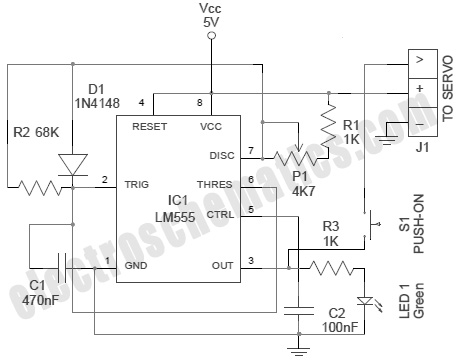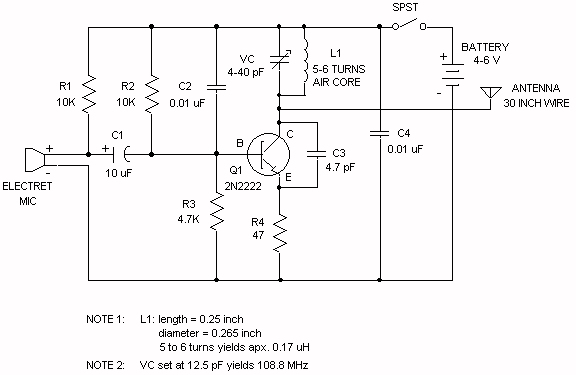
Low impedance pre amp circuit diagram
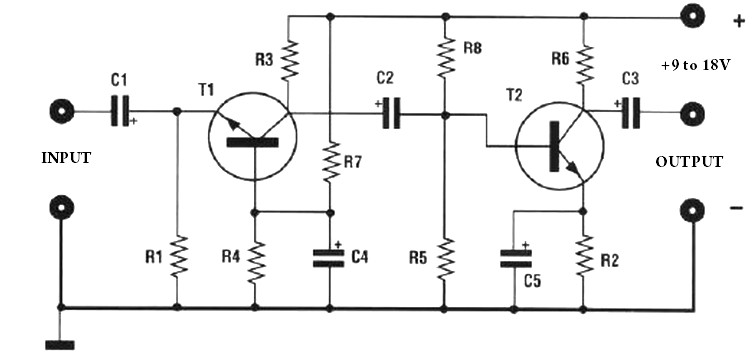
The amplification of this preamplifier is very high. To reduce the amplification, a trimmer resistor R3 in series with a value of 100 ohms should be used. The system can be powered by a voltage ranging from 9 to 18 volts. For its implementation, refer to the provided circuit diagram layout.
The preamplifier circuit is designed to achieve high gain, making it suitable for applications requiring signal amplification from low-level sources. The use of a trimmer resistor (R3) allows for fine-tuning of the gain, providing flexibility in adjusting the amplification to meet specific requirements. The series configuration of R3 ensures that the gain can be decreased as needed, which is particularly useful in preventing saturation or distortion of the amplified signal.
Powering the circuit with a voltage supply between 9 and 18 volts offers versatility, allowing it to be integrated into various systems where different power supply voltages are available. This range provides sufficient headroom for the operational amplifier or transistor used in the preamplifier, ensuring optimal performance across different operating conditions.
The circuit layout should be followed closely to ensure proper functionality. It is essential to pay attention to the orientation of components, particularly polarized capacitors and diodes, as incorrect placement can lead to circuit failure. The layout should also consider minimizing noise and interference, which can be achieved through careful routing of signal and power traces, as well as grounding practices.
In summary, this preamplifier circuit is designed for high gain with adjustable output through a trimmer resistor and is capable of operating within a specified voltage range, making it a versatile choice for various electronic applications.The amplification of this pre amp is therefore very high, whether to reduce, there should be a trimmer R3 series to 100 ohms. The system can be powered by a voltage of between 9 and 18Volts. for its realization, follow the diagram layout. 🔗 External reference
The preamplifier circuit is designed to achieve high gain, making it suitable for applications requiring signal amplification from low-level sources. The use of a trimmer resistor (R3) allows for fine-tuning of the gain, providing flexibility in adjusting the amplification to meet specific requirements. The series configuration of R3 ensures that the gain can be decreased as needed, which is particularly useful in preventing saturation or distortion of the amplified signal.
Powering the circuit with a voltage supply between 9 and 18 volts offers versatility, allowing it to be integrated into various systems where different power supply voltages are available. This range provides sufficient headroom for the operational amplifier or transistor used in the preamplifier, ensuring optimal performance across different operating conditions.
The circuit layout should be followed closely to ensure proper functionality. It is essential to pay attention to the orientation of components, particularly polarized capacitors and diodes, as incorrect placement can lead to circuit failure. The layout should also consider minimizing noise and interference, which can be achieved through careful routing of signal and power traces, as well as grounding practices.
In summary, this preamplifier circuit is designed for high gain with adjustable output through a trimmer resistor and is capable of operating within a specified voltage range, making it a versatile choice for various electronic applications.The amplification of this pre amp is therefore very high, whether to reduce, there should be a trimmer R3 series to 100 ohms. The system can be powered by a voltage of between 9 and 18Volts. for its realization, follow the diagram layout. 🔗 External reference
